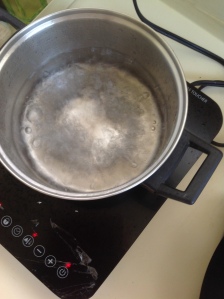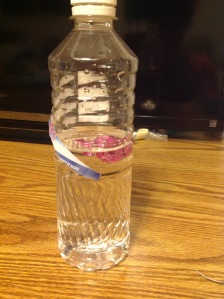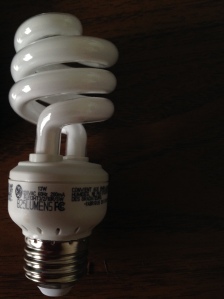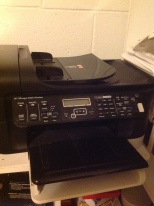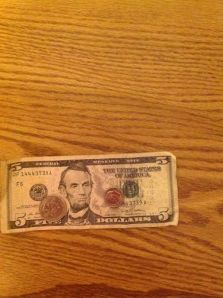Wow, we are nearly at the end of this course, Physics 2. This class was a challenging yet informative and I enjoyed the experience overall. We ended up doing a lot of labs, about 35 in all. Most of the labs were interesting to do, a mixture of both hands-on activities and online stimulation. We covered a lot of topics, covering light and optics, quantum and nuclear, electromagnetism, fluid mechanics and thermodynamics, and special relativity. In light and optics, we covered concepts such as reflection and refraction. We covered how lenses and mirrors work and how to calculate the magnification. We also learned about the double-slit experiment and diffraction. In quantum, we learned how things come in fixed quantities and ideas such as DeBroglie’s wave and Bohr’s model of the atom. In nuclear, we covered decay and the types of decay emitted from the atom. In electromagnetism, we learn how electricity and magnetism is related, and ideas such as the electric field, point charges, circuits, magnetic flux, etc. In fluids, we learned about the buoyancy force and Bernoulli’s principle. In thermodynamics, we learned of different types of processes, efficiency, thermal expansion, heat transfer, and more. In relativity, we learned of length contraction and time dilation. In short, we learned a lot and it was a fun experience.
Special Relativity- Weird Stuff
And so we covered the last topic for physics 2: special relativity. In Newtonian physics, any inertial reference frame is valid for the laws of physics and motion is relative. And so people thought that the speed of light too was relative and tried to find the medium that light travels through, the “luminiferous ether”. However, the Michelson-Morley Experiment discovered that light traveled at the same speed regardless if it was moving towards the sun, away from the sun, or parallel to the sun. This stumped scientists until Albert Einstein came along and published his papers on special relativity. Einstein stated first, the laws of physics are same in all inertial reference frames, and second, the speed of light in free space has the same measured value for all observers.
This theory came along with several ideas. One is regarding simultaneity. Simultaneous is when two events that occur at the same time. But Einstein in his thought experiment revealed that simultaneity isn’t always true and in fact can happen at different times. There is also the idea of time dilation and length contraction. When traveling near the speed of light, time slows down for the person traveling at that speed and more time passes for an outside observer. SInce v=d/t and v is constant, that means length also contracts at speeds near c. Momentum in special relativity is now expressed as p=γmu. Einstein in his famous equation shown that mass is another form of energy in E=mc^2.
What this stuff remains me of is Ender’s Game. But let’s write about the second book, Speaker for the Dead. Relativistic travel is also shown in this book as Ender did so much traveling near c that while he only aged 20 years, for the rest of the universe 3000 years has passed. By then, he was known as Ender the Genocide due the book Speaker for the Dead, that he, ironically, wrote himself. He kept his real name Andrew and laughed off when anyone made the connection. But anyway, that is time dilation. oh yeah, this book was weird. I mean pigs turned into trees and cows turning into weeds because of evolution is messed up.
Thermodynamic Fun
This past chapter we covered thermodynamics, the branch relating to heat and temperature to work and energy. In this post I will basically summarize what we learned this chapter. And so we covered several subjects related to thermodynamics. First, concepts related to temperature. Thermal energy is the KE of individual molecules and temperature is the measure of the average thermal energy. Heat is the transfer of thermal energy through either conduction, convection, or radiation. Temperature is measured using three scales: Fahrenheit, Celsius, and Kelvin. And so we learned two equations related to thermal expansion, one for length and another for volume.
We then went onto ideal gas law and kinetic theory. The ideal gas is one that has random elastic collision and that the collision are the only interactions between the particles. Mathematically the ideal gas law is expressed as PV=nRT. The kinetic theory states that the the macroscopic properties of a gas is related to one of its microscopic properties, the average kinetic energy of its particles. When then covered heat. Specific heat is the constant that relates the amount of heat flow to change a material’s temperature. Its equation is Q=mcΔT. Latent heat is the amount of energy needed to cause a phase change in a material. Its equation is Q=mL. Heat transfer, the transfer of thermal energy, is related in the conduction equation Q/t=KAΔT/L.
We then covered the 1st and 2nd law of thermodynamics. The first law states that net heat transfer to a system equals the change in system internal energy plus the work done by the system. The math equation is ΔU=Q-Wby. There are different process: isothermal, isobaric, isochoric, and adiabatic.The 2nd law is that entropy increases, or at best remains constant, in any isolated system. ΔS=ΔSsystem+ΔSenvironment
The picture I have below is that of water boiling. 100ºC water boils, and the amount of energy needed to change the water to steam can be found using the equation Q=mL. L would be that of the heat of vaporization.
Fluid Mechanics
Alright, so for this past chapter we covered fluid mechanics. Off topic, I should change my theme to something more interesting but still haven’t found the time to do so. But a fluid is a substance that can flow and conform of a container, so liquids and gases. Before going on, we first learned that density is mass over volume and pressure is force over area, two key equations needed to understand these topics. We learned that pressure can also be density(gravity)(height) by derivating it. So the deeper something goes in a liquid the pressure will increase.
The next time that we learned was Archimedes’ Principle. This states that an object in a fluid has an upward force equal to the weight of the fluid it displaces. This is the buoyancy force, which mathematically is the (density of liquid)(volume of object)(acceleration of gravity). We also learned that for something to float it needs to have a density less than the liquid’s density. Since the Dead Sea has high concentration of salt, the seawater there is significantly denser, allowing one to float much more easily than in a typical pool or saltwater area. We then covered Pascal’s principle which states that in a closed system the initial pressure equals the final pressure. Finally we learned about Bernoulli’s principle, which is basically a variation of the conservation of energy equation. I have a picture of a bottle with water. I know, I know, not the best thing to use but the candy wrapper in the bottle is floating, indicating that the density of it is less than water. The buoyancy force can also be calculated by discovering what percentage of it is submerged.
Electromagnetism
The past chapter I learned in physics 2 is magnetism and electromagnetism. Magnetism is caused by moving/spinning charge. Magnets have a north pole and a south pole, and like poles repel and unlike poles attract. However, unlike charges, the poles cannot be isolated and will always be paired together. In reality, the Earth’s north pole is actually a magnetic south pole while the Earth’s south pole is a magnetic north pole, which is actually quite confusing. In this class we also learned about the right hand rule and the equations of finding magnetic field and the magnetic force between two parallel conductors. We also learned about magnetic torque which is based off of sin theta and is useful in electric motors as these motors can change electrical energy into mechanical energy. We then covered EM Induction. Michael Faraday discovered that a changing magnetic field can change a change in current, showing how there is a relationship between the two. From Lenz’s law, the emf will also cause a secondary current that will oppose the original, a way of demonstrating Newton’s Third Law. We then covered generators and transformers. Generators are the oppose of motors and convert mechanical energy to electric energy. A transformer is a device that has a primary and secondary coil that with an alternating current can change the incoming voltage. In the picture below, the iPad charger is a transformer and is able to lower the voltage to charge the iPad.
Current Electricity
This last chapter our class continued on with our learning on electricity, going from static electricity to current electricity. Like its name suggests, current electricity deals with the flow of charges. Similar to how water flows from high pressure to low pressure, electrons, which are what actually “flows” and opposite of the direction of the conventional positive current, go from high voltage to low voltage. Current is the rate that charge flows, and is expressed mathematically as voltage/resistance. Resistance is what basically opposes the flow of the charge, and usually higher resistance is associated with thin, long, and hot wires. Also in this chapter was electrical power. Power is the amount of energy in a given amount of time and for electrical power can be expressed as P=IV. However, when paying for the electrical bill what is being measured is actually energy and not the power. In this case, energy consumed is measured using the kilowatt-hours, kWh, and is equal to 3.6*10^6 Joules. On Oahu we pay 0.35$ per kWh, significantly higher than the rest of the nation. The picture below is that of a CFL light-bulb, which is much more efficient than incandescent light-bulbs and is more environmentally friendly. In our class we also covered circuits. Circuits are done in parallel, series, or a mixture of both. In parallel the voltage is the same for all resistors but the current can be different. In series, the current is the same throughout but not the voltage. We also learned to apply Kirchhoff laws, such as the junction rule which states that charge is conservation and the loop rule, which states that the total voltage around a loop is zero. We finally learned about RC circuits and how resistors and capacitors work in a circuit.
Static Electricity
Alright, this past chapter we basically covered the ideas of static electricity and of electricity potential energy. Basically, static electricity is about the transfer of charge, with conductors, metals, good at transferring charge while insulators, non-metals, tend to be poor at transferring charge. We also learned about electric fields, which are a region of influence around a charged object that causes objects in the field to experience electric force. These electric fields can be visualized using electric field lines. These lines begin on positives charges and end on negative charges. This lines allow us to see the strength of the field and the region it influences. There are also equipotential lines that are perpendicular to the field lines and help show the electric potential at areas on the lines. We learned that electric potential energy is similar to gravitational potential energy and can be found using kQ1Q2/r^2. We also learned about capacitors which basically helps us learn about the amount of charge an object can store. There are two types we learned, parallel capacitors and series capacitors. In parallel, the equivalent capacitance is greater than any of the individual while for series it is less than any of the individual.
So my personal example is that of the laser printer. Basically, an laser printer works having a both positively and negatively charged photorecepter drum. An ink roller coats the drum with the toner onto the negative parts of the drum. When paper goes through, the toner attracts to the positively charged paper and thus forms the printout. Based on which part of the drum is charged, we get the result of what we what to print.
Nuclear Physics
What I learned in the past one or two weeks was nuclear physics, which is basically the study of subatomic structures and radioactivity. I learned that the atom is made of electrons, protons, neutrons, and a lot of space. The nucleus of the atom is made of protons and neutrons which is kept together by the strong nuclear force while electrons circle around the nucleus in orbitals. The atom is made mostly of space, and the radius can be found using R=1.2fm*A^1/3. Radioactivity occurs when the atom emits rays that carry energy. These rays are different into three types: alpha, beta, and gamma. An alpha particle has the same mass of a helium atom but with a +2 charge. A beta particle has the same mass as an electron but can have either a +1 charge or a -1 charge. And finally, a gamma ray is basically light with an extremely high frequency and of the three is the most dangerous and can kill.
Two topics related to nuclear physics is fission and fusion. Fission occurs when an atom’s nucleus breaks down into smaller ones. Often U-235 is used in fission reactors and can generate usable energy. Fusion occurs when nuclei are fused together to create a bigger nucleus. The sun does this and creates helium out of hydrogen and releases a lot of energy. Another topic is radioactive decay. This is occurs when an unstable atom destroys part of it mass to emit radiation . This is often measured in 1/2 lives, which is the amount of time for half of the atoms to decay to a more stable form. This can be seem graphically as exponential decay. While this doesn’t happen too often in physics, there is also exponential growth. This happens when something growths at a exponential rate. For example, in my picture I just kept doubling the amount of rice I have and it grew tremendously
Quantum Physics Stuff
Yay, survived another chapter of physics! I should change my theme, it’s kinda dull . . . But anyway, quantum physics. The key idea behind quantum physics is that light and other things are “quantized”, meaning that it can only appear in discrete values and not a value in between. For example, my picture shows several coins. Money is quantized as the smallest amount of money is 1 cent, nothing less. It’s not quite possible to spent .5 of a cent or 6.3 cents; instead all values must be whole numbers with rounding.
This relates to light as quantum physics is about examining the quantized properties of light. Scientists once believed that for black body radiation the intensity increased as the wavelength decreased. However, experimentally they discovered that the intensity actually went down when reaching UV and shorter wavelengths. From this they theorized that light was quantized and that while the intensity at shorter wavelength was lower the energy was higher. Discovering that light was quantized allowed scientists to derive other facts. For example, they discovered that the photoelectric effect occurs when quantized packets of light, called photons, strike the metal and release electrons if the energy of the photons are high enough. Scientists also discovered that because light behaved as a particle they derived Compton scattering. Compton scattering occurs when photons collide with electrons and cause themselves to deflect at an angle and give energy to the electron. If light was just a wave then this would probably wouldn’t be able to happen. Anyway, that’s all I have for now. I’m going to go look at other people’s blog . . .
CDs and Diffraction Gratings
This is definitely not the most original thing to write about, but I’ll discuss CDs in this post. One thing that I learned in this past unit on wave optics is diffraction gratings. Diffraction gratings are like double slits but instead there are, obviously, multiple slits. But anyway when light passes through the diffraction grating it exhibits wavelike characteristics and produces inference patterns. This relates to CDs as on the surface of a CD there are small grooves arranged in a spiral, and these grooves act as a diffraction grating. Thus when white light is shined on the CD the grooves will cause the light to diffract into the colors of the rainbow and reflect these colors. That is why on the surface of a CD one can sometimes see rainbow colors. A bit of a change in topic, but there is a difference between CDs and blu ray. While CDs use a red laser, blu ray uses a blue laser. Because of this, blu rays can store much more information than CDs as blue light has a shorter wavelength and thus allows more room. Blu rays would have been the next big thing, but then came the internet and piracy . . .
Observe the rainbow light on the CD.

